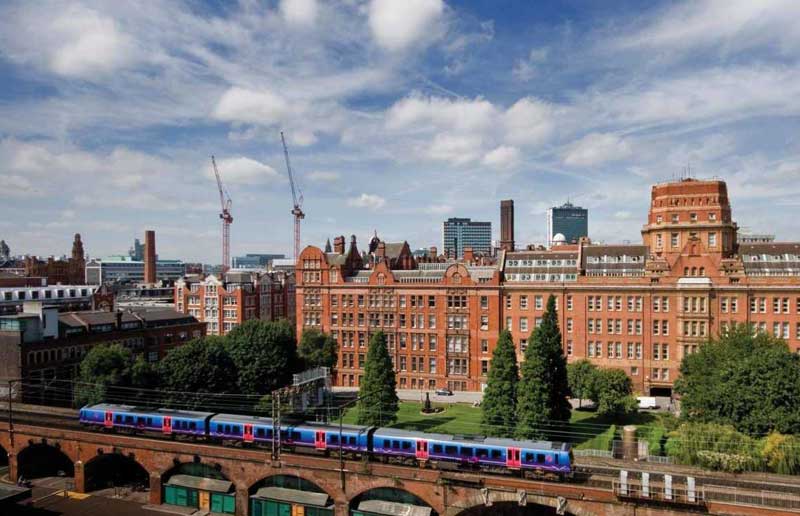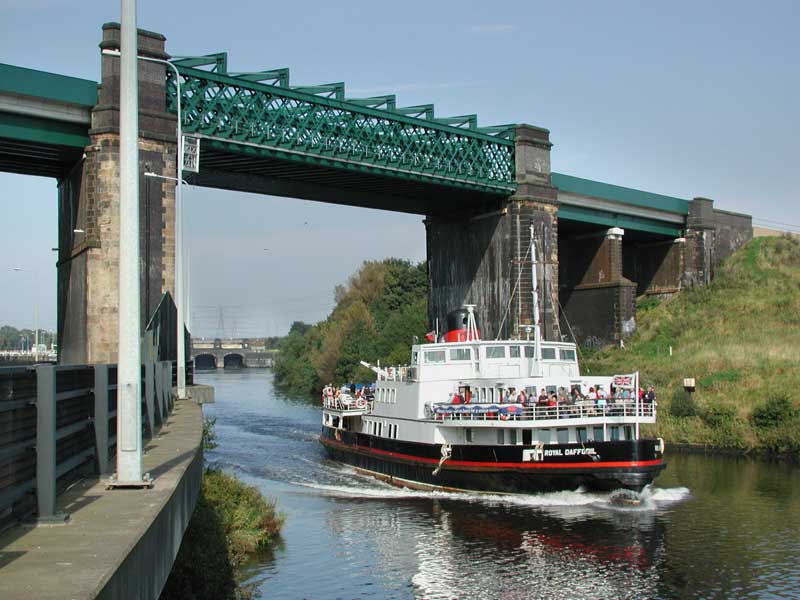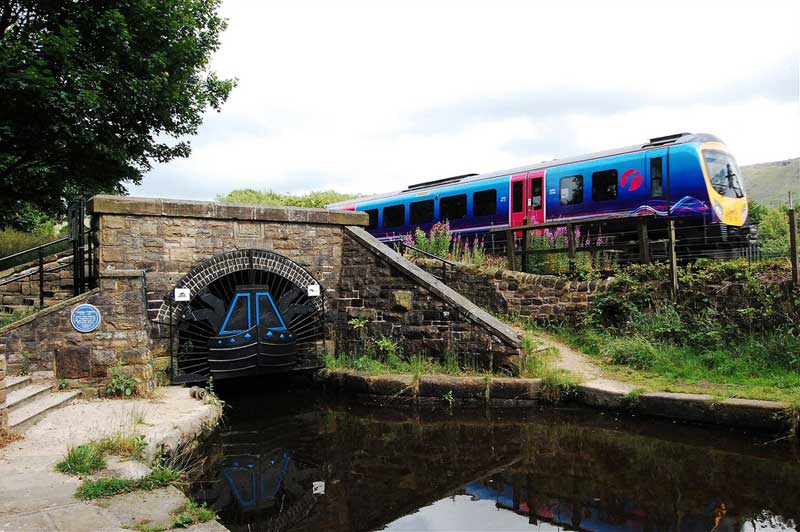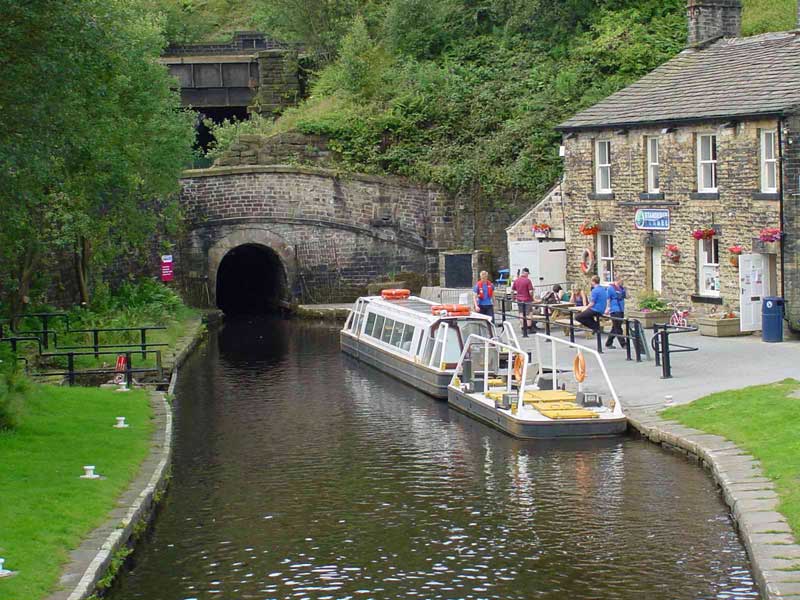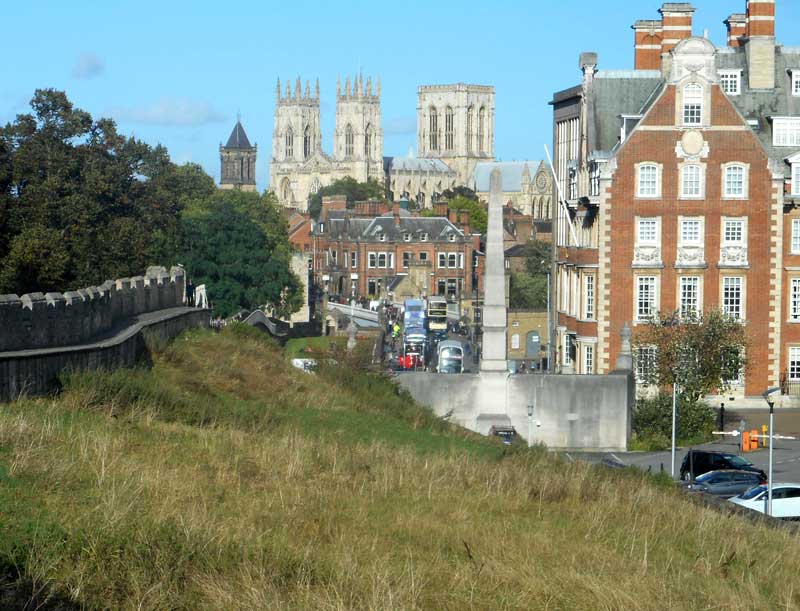Trans Pennine Express
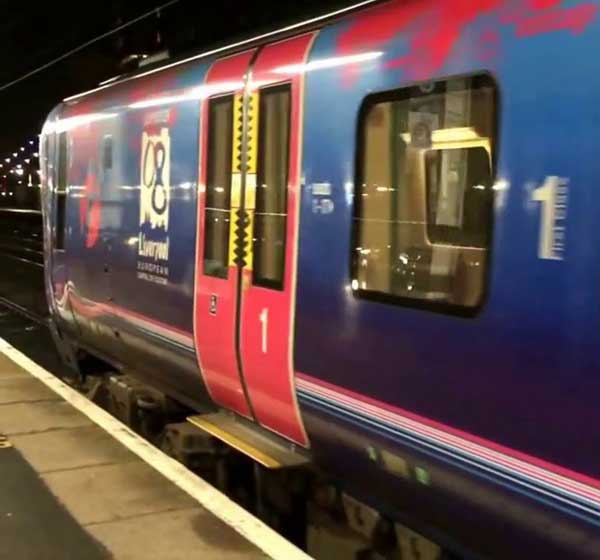
TransPennine Express is a British train operating company owned by FirstGroup operating the TransPennine Express franchise. It runs regular express regional railway services between the major cities of Northern England as well as Scotland.
The TransPennine Express franchise operates all its services to and through Manchester covering three main routes. The service provides rail links for major towns and cities such as Edinburgh, Glasgow, Liverpool, Sheffield, Hull, Leeds, York, Scarborough, Middlesbrough and Newcastle. TransPennine Express is one of the few UK train operating companies running 24 hours a day, including through New Year's Eve night. Trains run between York, Leeds and Manchester Airport at least every three hours every night of the week.

The TransPennine Express routes are subdivided into three sections:
North TransPennine, which includes all routes that pass through the core section between Manchester and Leeds
South TransPennine, which includes services running on the Hope Valley Line and the South Humberside Main Line
TransPennine North West, which consists of services on the West Coast Main Line.
Travel Times
Liverpool to Scarborough: 3 hours 8 minutes
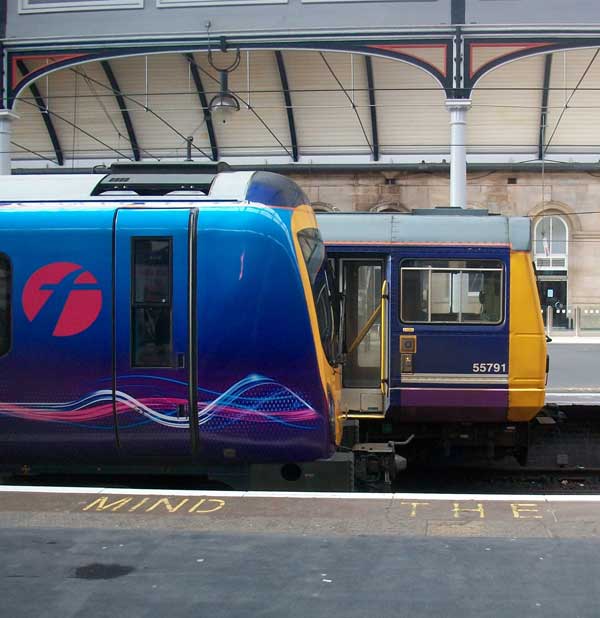
Plan and Book:


The Journey
The backbone of the TransPennine Express service is a railway line which links Liverpool on England's west coast and Scarborough on its east coast. Connecting to this east-to-west, coast-to-coast line at various stations along the way are branch and cross lines to other destinations, mainly to the north, which are serviced by TransPennine Express trains. It is along the backbone line that this railway journey travels.
Liverpool
The journey begins at Lime Street station, the Liverpool terminus of the service. Lime Street is the largest and oldest railway station in Liverpool, its large entry hall fronts Lime Street in the heart of Liverpool. Planned along the lines of Euston station in London and built in 1849, it ended up with a single curved roof. In 1867 further expansion was needed and included the present northern arched train shed. With a span of 61 metres, it was the largest in the world at the time. As its name indictes, the station fronts Lime Street, made famous outside of Liverpool by the Beatles who mentioned it in their ditty "Maggie Mae" on their album "Abbey Road".
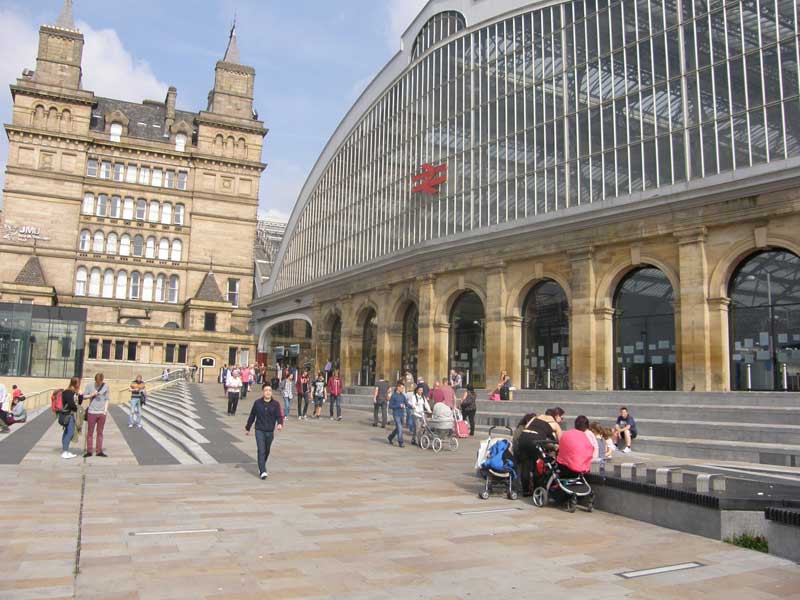
Lime Street station, Liverpool
The station building's opulence reflects the city's wealth during the era of its construction, a large volume of trade from the West Indies was passing through Liverpool, surpassed that of Ireland and Europe. In 1830, Liverpool and Manchester became the first cities to have an intercity rail link, through the Liverpool and Manchester Railway. Given the crucial place of both cotton and slavery in the city's economy, its docks became Britain's busiest and its wealth exceeded that of London.
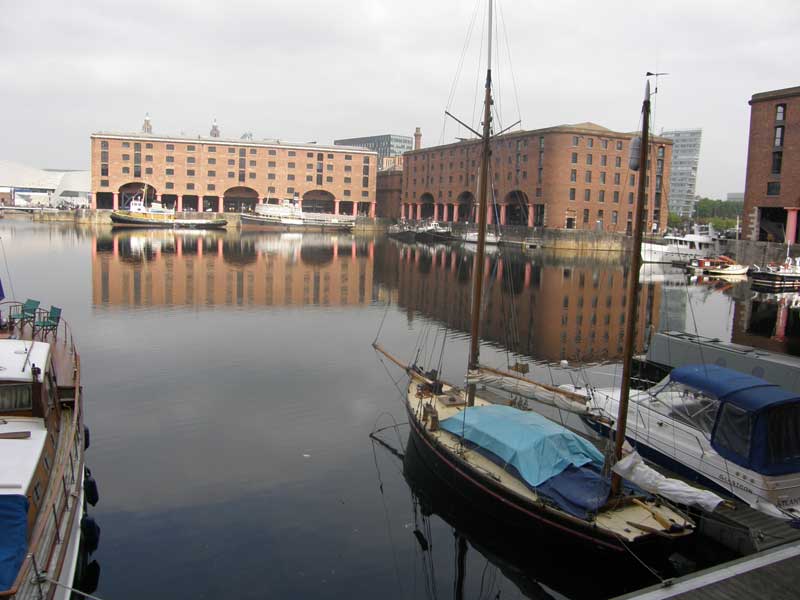
Albert Dock, Liverpool
From the mid-1970s onwards, Liverpool's docks and traditional manufacturing industries went into sharp decline due to restructuring of shipping and industry, causing massive losses of jobs. In the later 20th century, Liverpool's economy began to recover and they city focused on regeneration, a process which continues today.


